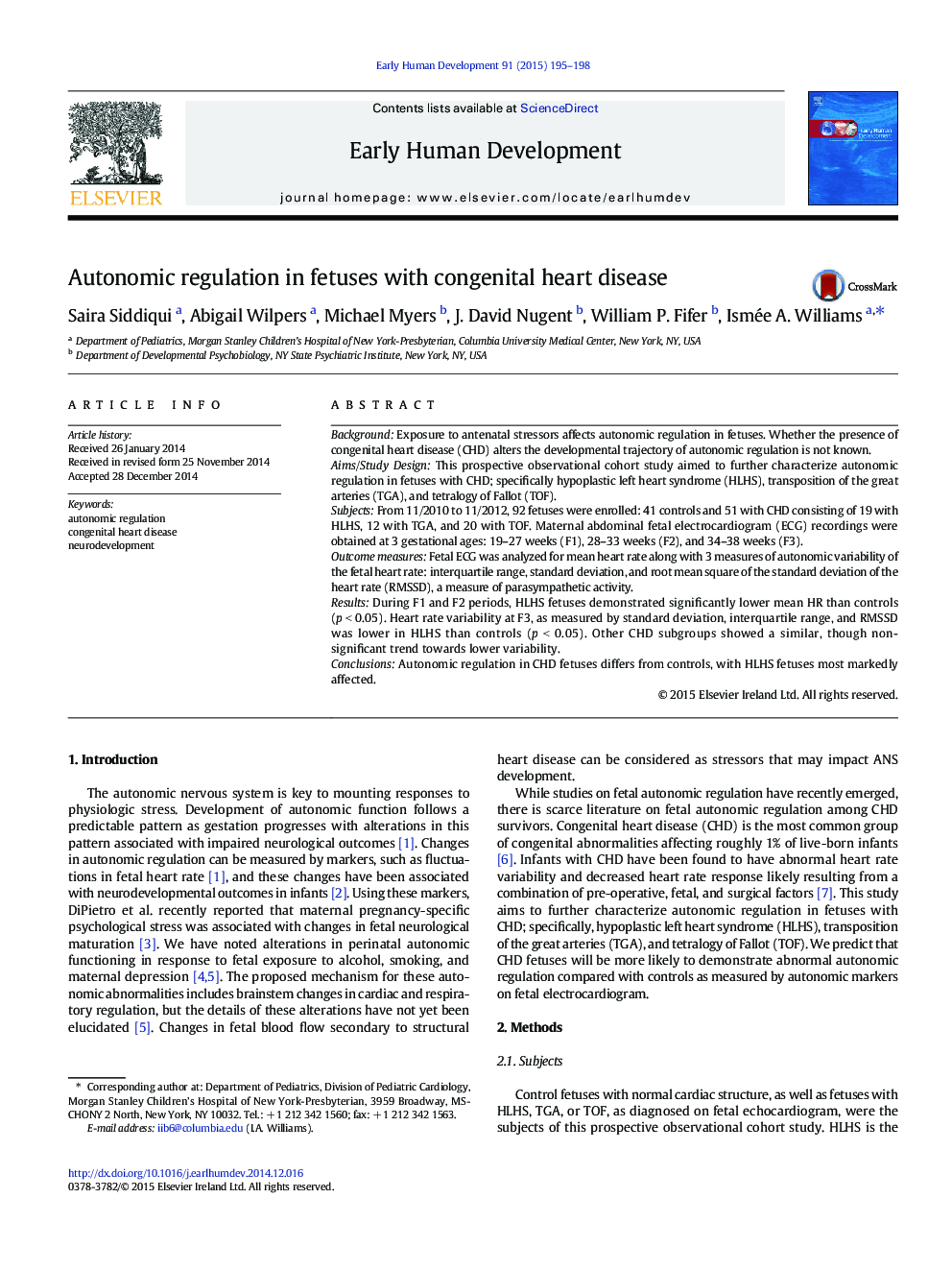| Article ID | Journal | Published Year | Pages | File Type |
|---|---|---|---|---|
| 3917001 | Early Human Development | 2015 | 4 Pages |
•Hypoplastic left heart fetuses demonstrate lower mean heart rate than controls.•Heart rate variability in hypoplastic left heart fetuses is lower than controls.•Other congenital heart disease subgroups trend towards lower heart rate variability.
BackgroundExposure to antenatal stressors affects autonomic regulation in fetuses. Whether the presence of congenital heart disease (CHD) alters the developmental trajectory of autonomic regulation is not known.Aims/Study DesignThis prospective observational cohort study aimed to further characterize autonomic regulation in fetuses with CHD; specifically hypoplastic left heart syndrome (HLHS), transposition of the great arteries (TGA), and tetralogy of Fallot (TOF).SubjectsFrom 11/2010 to 11/2012, 92 fetuses were enrolled: 41 controls and 51 with CHD consisting of 19 with HLHS, 12 with TGA, and 20 with TOF. Maternal abdominal fetal electrocardiogram (ECG) recordings were obtained at 3 gestational ages: 19–27 weeks (F1), 28–33 weeks (F2), and 34–38 weeks (F3).Outcome measuresFetal ECG was analyzed for mean heart rate along with 3 measures of autonomic variability of the fetal heart rate: interquartile range, standard deviation, and root mean square of the standard deviation of the heart rate (RMSSD), a measure of parasympathetic activity.ResultsDuring F1 and F2 periods, HLHS fetuses demonstrated significantly lower mean HR than controls (p < 0.05). Heart rate variability at F3, as measured by standard deviation, interquartile range, and RMSSD was lower in HLHS than controls (p < 0.05). Other CHD subgroups showed a similar, though non-significant trend towards lower variability.ConclusionsAutonomic regulation in CHD fetuses differs from controls, with HLHS fetuses most markedly affected.
